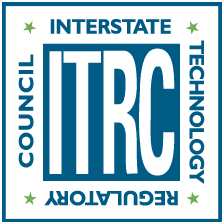Sustainable and Resilient Remediation
Website
This self described tool is a map of projects where remediation of contamination contamination included protections to restore natural resources and habitats, links to various site specific resources are found at the site specific pages linked on the map.
Climate
Executive Order
This Washington State Executive Order establishes the Governor’s Carbon Emissions Reduction Taskforce
http://www.governor.wa.gov/sites/default/files/exe_order/eo_14-04.pdf
Guidance
This document provides guidance to cleanup project managers so that they 1) understand the risks to cleanup sites associated with a changing climate and 2) increase the resilience of cleanup sites at each phase of the cleanup process. By putting adaptation measures into place during the early stages of a cleanup, the number of feasible cleanup options may increase; their integrity can be maximized; and, in some situations, cost can be reduced.
https://fortress.wa.gov/ecy/publications/SummaryPages/1709052.html
https://fortress.wa.gov/ecy/publications/documents/1709052.pdf
Website
The Climate Impacts Group works with decision makers to develop the fundamental scientific understanding, data, tools, guidance, and capacity needed to manage climate risks.
Wildfire
Report
In-depth 10-year wildland fire protection plan published in 2018, second edition in 2019, that details how Washington state will better prevent, prepare, and respond to wildfires in the coming decade. Due for update in 2020.
https://www.dnr.wa.gov/StrategicFireProtection
https://www.dnr.wa.gov/publications/rp_wildfire_strategic_plan.pdf?xf9sbs
Summary of the wildfire statistics and suppression, preparedness, and prevention priorities for the 10-year plan.
https://www.dnr.wa.gov/StrategicFireProtection
https://www.dnr.wa.gov/publications/rp_wildfire_plan_summary.pdf?eqhig8
20-year plan to increase forest health in Washington state, including increased wildfire resilience. Home website also has links to other WA fire resources.
https://www.dnr.wa.gov/ForestHealthPlan#read-the-plan
https://www.dnr.wa.gov/publications/rp_forest_health_20_year_strategic_plan.pdf?n346u


